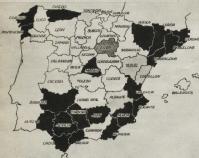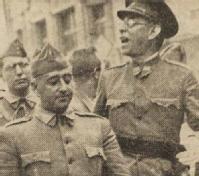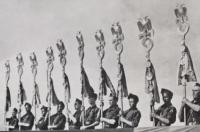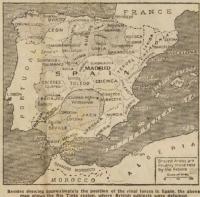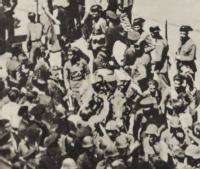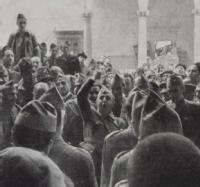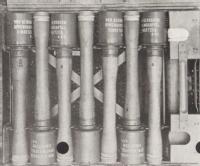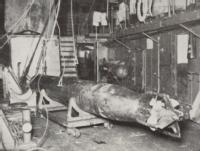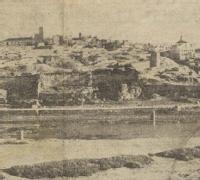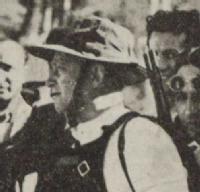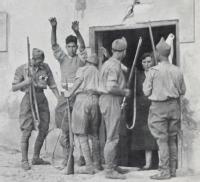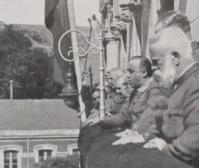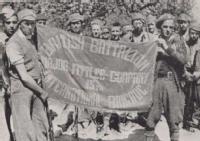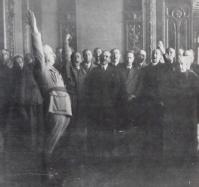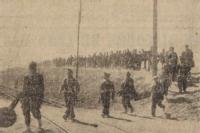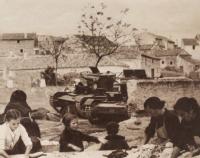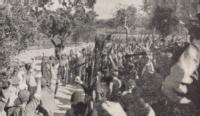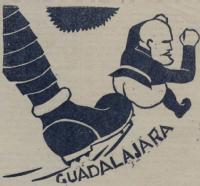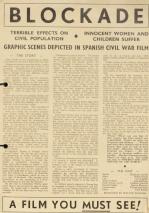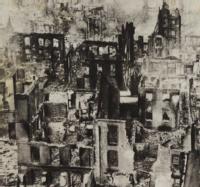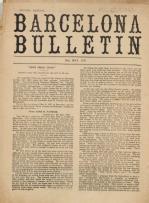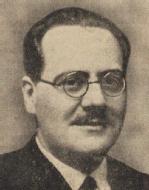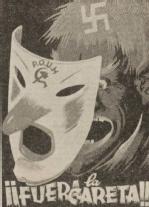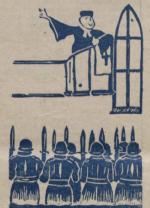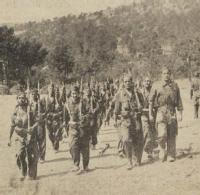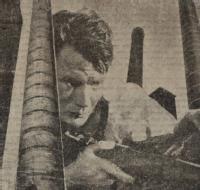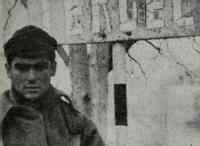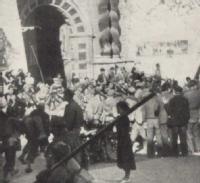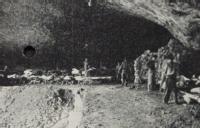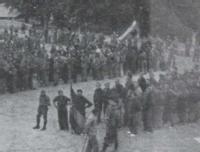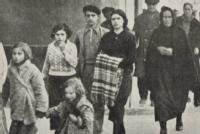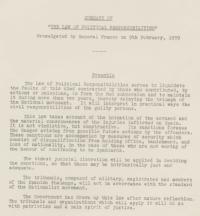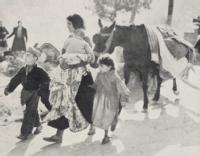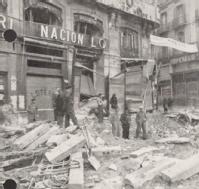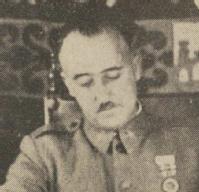Illustrated timeline of the Spanish Civil War (short)
A more detailed timeline and maps of Spain during the civil war are also available
Most of the images included in this timeline are from documents made available online as part of our Spanish Civil War digitisation project.
A note about terms: supporters of the Spanish government during the Spanish Civil War are usually referred to as Republicans (Republican leaders included Francisco Largo Caballero and Juan Negrín); supporters of the military coup against the government are usually referred to as Nationalists (Nationalist leaders included General Francisco Franco and General Emilio Mola).
16 February 1936
Elections held for the Cortes (Spanish parliament). They are won by the 'Popular Front' (a coalition of left-wing political parties).
8 March 1936
Meeting of army officers in Madrid (including General Mola and General Franco) to discuss a military coup against the Popular Front government.
15 March 1936
The government bans the Falange, a Spanish fascist organisation. Its leader, José Antonio Primo de Rivera, is arrested for illegal possession of weapons.
The Falange was banned after members tried to assassinate Luis Jiménez Asúa, a Socialist member of the Cortes, on 10 March, and the trade union leader Francisco Largo Caballero on 14 March.
17-18 July 1936
Start of military rebellion against the Spanish government in North Africa, then mainland Spain.
19-20 July 1936
The military uprising is defeated in Madrid and Barcelona. Morocco, Galicia, Navarre, Old Castile and Seville soon come under the control of the rebels. The intended leader of the coup, General Sanjurjo, is killed when the aeroplane carrying him from Portugal to Spain crashes.
21 July - 27 September 1936
Members of the Civil Guard and military cadets are besieged in the Alcazar citadel, in Toledo, by pro-government forces. After more than two months the siege was raised by Nationalist troops commanded by General Franco.
The relief of Alcazar was seen as a great symbolic victory by the Nationalists, and stories of 'red' atrocities towards civilians during the siege were used in anti-government propaganda.
Late July 1936 onwards
Italian and German military supplies, including aircraft, are received by the rebels in North Africa and Spain. The Soviet Union agrees to send aid to the Republican side.
August 1936
A "non-intervention" agreement, banning military intervention in Spain by other countries, is proposed and promoted by the French and British governments. Key governments (including those of Portugal, Germany, Italy and the Soviet Union) agree to this in principle. In practise Germany, Italy and the Soviet Union continue to send military supplies throughout the war.
14 August 1936
Capture of the city of Badajoz (near the Portuguese border) by Nationalist forces commanded by Lieutenant Colonel Juan Yagüe. The massacre of an estimated 2,000 - 4,000 civilians followed.
Badajoz was used in Republican propaganda as a symbol of Nationalist barbarism. The Nationalists' use of Moroccan troops ("Moors") to carry out atrocities against Spaniards in Badajoz and elsewhere was often highlighted.
4 September 1936
Francisco Largo Caballero becomes Republican Prime Minister. His coalition government would include socialists, communists, Left Republicans, Basque nationalists and (after 4 November 1936) anarchists.
5 September 1936
The Basque town of Irun is taken by the Nationalists.
Large areas of the town were set on fire as Republican troops retreated (an act usually attributed to supporters of the anarchist CNT-FAI). Nationalists would later use the example of Irun as supporting evidence when they argued that the destruction of towns such as Guernica was caused by Republican arson rather than Nationalist bombing.
21 September 1936
Rebel leaders agree that General Franco should be appointed supreme commander of the Nationalist forces (Generalissimo).
October 1936
The first International Brigades (Brigadas Internacionales) are formed. Their members are foreign volunteers who had travelled to Spain to fight on behalf of the Republican government.
1 October 1936
General Franco is formally invested as Caudillo (leader of Spain) in the throne room at Burgos (Burgos was the location of the alternative Nationalist government).
2 November 1936
Nationalist troops capture the town of Brunete, west of Madrid.
7 November 1936
Start of Nationalist ground assault on Madrid.
6 February 1937
Start of the Battle of Jarama - a Nationalist offensive to cross the river Jarama, to the east of Madrid. It continued for most of February.
8-18 March 1937
Battle of Guadalajara (Nationalist offensive). The city of Guadalajara is 34 miles north east of Madrid.
6 April 1937
Nationalists announce a blockade of Republican ports on the north (Cantabrian) coast - threatening ships with attack if they sail to these areas.
26 April 1937
Bombing of the Basque capital of Guernica by German aeroplanes. The air raid was an attack on civilians, rather than a military target, and resulted in the destruction of much of the town.
3-8 May 1937
'Events of May' in Barcelona: Divisions between several Republican political groups (Communists, Partido Obrero de Unificación Marxista (POUM), and anarchists) result in street fighting between supporters of the different factions.
17 May 1937
Juan Negrín becomes Republican Prime Minister, replacing Francisco Largo Caballero. His new government contains more Communists.
16 June 1937
The revolutionary socialist group Partido Obrero de Unificación Marxista (POUM) is declared illegal by the Republican government. Its leaders are arrested, (including Andres Nin, who was killed several days later).
1 July 1937
Spanish Bishops collectively endorse Franco as the legitimate ruler of Spain.
6-26 July 1937
Battle of Brunete - Republican offensive against Nationalist forces to the west of Madrid.
21 October 1937
Capture of the city of Gijon (and district of Asturias) by Nationalist forces. All of the north (Cantabrian) coast is now under Nationalist control.
14 December 1937 - 22 February 1938
Battle of Teruel. In the middle of a harsh winter, Republican forces capture Teruel before being forced to retreat by a Nationalist counter-attack.
15 April 1938
Catalonia is cut off from the rest of Republican Spain, as Nationalist troops take the Mediterranean coastal town of Vinaroz.
25 July-16 November 1938
Battle of the Ebro. Republican troops launch an offensive across the River Ebro. Despite initial success, the Republican army is eventually forced back across the river by Nationalist counter-attacks.
4 October 1938
Withdrawal of the International Brigade from the front.
The Republican Prime Minister Juan Negrín ordered the unconditional withdrawal of all foreign troops fighting in the International Brigades, in the hope that international pressure might then force the withdrawal of Italian and German troops fighting on behalf of the Nationalists. It didn't.
26 January 1939
Nationalist forces enter Barcelona.
9 February 1939
'Law of Political Responsibilities' introduced by Franco.
The new law allowed penalties (including imprisonment and confiscation of property) to be imposed on anyone who had supported the Republican government in the past or present. This could include people who had voted for them in February 1936.
10 February 1939
Fall of Catalonia to Nationalist troops. In the previous week, thousands of refugees had fled to France.
28 March 1939
Madrid taken by Nationalist forces.
1 April 1939
Republican armies surrender. General Franco declares the war to be over.

